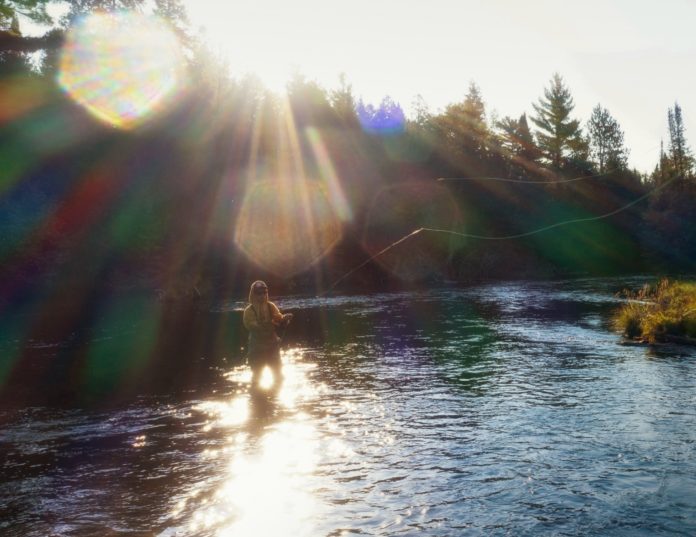- Intensifying weather patterns are gradually adding stress to river ecosystems across the country, chipping away at wildlife’s ability to adapt.
- The issue has begun changing minds about climate change among recreational fishermen, a demographic that leans politically conservative.
- The root cause of the issue is global climate change. But in the meantime, simple mitigation techniques can make the difference between whether a fish population persists in an area or succumbs to environmental pressures.
By Laura Gersony, Circle of Blue
The air is rich with the scent of wild river as David McCool sets his boat in the Au Sable River in northern Michigan. The early morning silence is broken only by an occasional bird call and the soft susurrations of the crystal clear water. It’s a river that Henry Ford and John Rockefeller fished, and a place Ernest Hemingway deemed “good stuff for essays.”
Michigan’s unusually warm winter temperatures, followed by a historic drought and one of the hottest summers on record, are warming the Au Sable.
An angler for 20 years, McCool has done this more times than he can count. He never tires of the sensation. The clear waters of the Au Sable, which courses across 138 miles of northern Michigan forest, is one of the country’s renowned places to cast a fly. It’s a river so revered as a trout fishery that in 1959 a group of Au Sable fishermen formed Trout Unlimited, now the country’s premier advocacy organization to protect cold-water streams in Michigan and nationwide.
More than 60 years later, the river is ill. A slow emergency is brewing in the peaceful waters. Michigan’s unusually warm winter temperatures, followed by a historic drought and one of the hottest summers on record are warming the Au Sable. When the water is warm, much of the trout population flees to the river’s tributaries, instinctively searching for oxygen-richer waters.
In some places, the effects of climate change manifest as immediate catastrophe. Violent storms. Extreme heat. Deep drought. On the Au Sable, the threat is a slow burn. Intensifying weather patterns have gradually added stress to the ecosystem, chipping away at wildlife’s ability to adapt. As the atmosphere continues to warm, severe weather events have gone from occasionally urgent to relentless assault.
“The guides of the Au Sable, we’re on the front lines,” McCool said. “Just a small change in temperature can have a massive impact on this resource. We need to make sure we still take care of it, as things change in our environment.”
Ecologically speaking, fish are the canary in the coal mine. Trout are an indicator species in the Au Sable ecosystem, meaning that their well-being reflects the health of the ecosystem. “Healthy trout is indicative that the whole system is healthy,” said Randy Claramount, a biologist with Michigan’s Department of Natural Resources. Likewise, unhealthy populations are an alarm bell: the poor water quality conditions that cause trout to suffer are likely also stressing invertebrates and other biota.
“You start piling these things on top of one another, and it just gets harder for those fish to adapt to what nature’s throwing at them,” said Keith Curley, a conservationist with Trout Unlimited.
Credit: Source link































